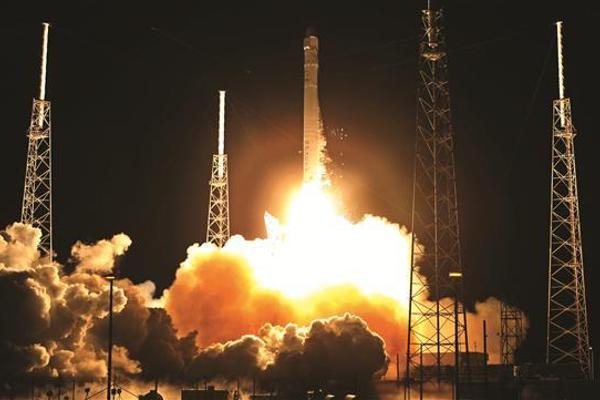SpaceX Dragon capsule launched to space station
CAPE CANAVERAL, Florida - The Associated Press


A Falcon 9 rocket carrying a Dragon blasts off Oct 7. ABACAPRESS photo
A commercial cargo ship rocketed into orbit Oct. 7 in pursuit of the International Space Station, the first of a dozen supply runs under a mega-contract with NASA.It was the second launch of a Dragon capsule to the orbiting lab by the California-based SpaceX company. The first was last spring.
This time was no test flight, however, and the spacecraft carried 453.6 kilograms of key science experiments and other precious gear on this truly operational mission.
The company’s unmanned Falcon rocket roared into the night sky right on time, putting SpaceX on track to reach the space station Wednesday. The complex was soaring southwest of Tasmania when the Falcon took flight. Officials declared the launch a success, despite a problem with one of the nine first-stage engines. The rocket put Dragon in its intended orbit, said the billionaire founder and chief executive officer of SpaceX, Elon Musk.
Especially exciting for NASA is the fact that the Dragon will return twice as much cargo as
it took up, including a stockpile of astronauts’ blood and urine samples. The samples, nearly 500 of them, have been stashed in freezers since Atlantis made the last shuttle flight in July 2011.
The Dragon will spend close to three weeks at the space station before being released and parachuting into the Pacific at the end of October. By then, the space station should be back up to a full crew of six.
None of the Russian, European or Japanese cargo ships can bring anything back; they’re destroyed during re-entry. The Russian Soyuz crew capsules have limited room for anything besides people.
Space Exploration Technologies Corp., or SpaceX - owned by PayPal co-founder Musk - is working to convert its unmanned Dragon capsules into vessels that could carry astronauts to the space station in three years. Other U.S. companies also are vying to carry crews. Americans must ride Russian rockets to orbit in the meantime, for a steep price.
